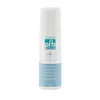What's inside
What's inside
 Key Ingredients
Key Ingredients

 Benefits
Benefits

 Concerns
Concerns

 Ingredients Side-by-side
Ingredients Side-by-side

Water
Skin ConditioningPropanediol
SolventTranexamic Acid
AstringentNiacinamide
SmoothingGlycerin
HumectantSodium Hyaluronate
HumectantGluconolactone
Skin ConditioningAscorbyl Glucoside
AntioxidantAloe Barbadensis Leaf Juice
Skin ConditioningPyrus Malus Fruit Extract
Skin ConditioningXylitylglucoside
HumectantAnhydroxylitol
HumectantXylitol
HumectantGlucose
HumectantHydroxyethylcellulose
Emulsion StabilisingSodium Chloride
MaskingGlyoxal
AntimicrobialPanthenol
Skin ConditioningSodium Benzoate
MaskingCalcium Gluconate
HumectantWater, Propanediol, Tranexamic Acid, Niacinamide, Glycerin, Sodium Hyaluronate, Gluconolactone, Ascorbyl Glucoside, Aloe Barbadensis Leaf Juice, Pyrus Malus Fruit Extract, Xylitylglucoside, Anhydroxylitol, Xylitol, Glucose, Hydroxyethylcellulose, Sodium Chloride, Glyoxal, Panthenol, Sodium Benzoate, Calcium Gluconate
Water
Skin ConditioningSd Alcohol 40
AstringentIsopropyl Alcohol
SolventGlycerin
HumectantSalicylic Acid
MaskingButylene Glycol
HumectantPropylene Glycol
HumectantDimethylmethoxy Chromanyl Palmitate
Skin ConditioningTetrahydrodiferuloylmethane
AntioxidantGlycolic Acid 0.1%
BufferingLactic Acid 0.1%
BufferingCamphor
MaskingAzadirachta Indica Leaf Oil 0.15%
MaskingCera Alba
EmollientSalix Alba Bark Extract
AstringentBetula Alba Bark Extract
MaskingCyclohexasiloxane
EmollientHydroxyethylcellulose
Emulsion StabilisingPhenoxyethanol
PreservativeWater, Sd Alcohol 40, Isopropyl Alcohol, Glycerin, Salicylic Acid, Butylene Glycol, Propylene Glycol, Dimethylmethoxy Chromanyl Palmitate, Tetrahydrodiferuloylmethane, Glycolic Acid 0.1%, Lactic Acid 0.1%, Camphor, Azadirachta Indica Leaf Oil 0.15%, Cera Alba, Salix Alba Bark Extract, Betula Alba Bark Extract, Cyclohexasiloxane, Hydroxyethylcellulose, Phenoxyethanol
Ingredients Explained
These ingredients are found in both products.
Ingredients higher up in an ingredient list are typically present in a larger amount.
Glycerin is already naturally found in your skin. It helps moisturize and protect your skin.
A study from 2016 found glycerin to be more effective as a humectant than AHAs and hyaluronic acid.
As a humectant, it helps the skin stay hydrated by pulling moisture to your skin. The low molecular weight of glycerin allows it to pull moisture into the deeper layers of your skin.
Hydrated skin improves your skin barrier; Your skin barrier helps protect against irritants and bacteria.
Glycerin has also been found to have antimicrobial and antiviral properties. Due to these properties, glycerin is often used in wound and burn treatments.
In cosmetics, glycerin is usually derived from plants such as soybean or palm. However, it can also be sourced from animals, such as tallow or animal fat.
This ingredient is organic, colorless, odorless, and non-toxic.
Glycerin is the name for this ingredient in American English. British English uses Glycerol/Glycerine.
Learn more about GlycerinHydroxyethylcellulose is used to improve the texture of products. It is created from a chemical reaction involving ethylene oxide and alkali-cellulose. Cellulose is a sugar found in plant cell walls and help give plants structure.
This ingredient helps stabilize products by preventing ingredients from separating. It can also help thicken the texture of a product.
This ingredient can also be found in pill medicines to help our bodies digest other ingredients.
Learn more about HydroxyethylcelluloseWater. It's the most common cosmetic ingredient of all. You'll usually see it at the top of ingredient lists, meaning that it makes up the largest part of the product.
So why is it so popular? Water most often acts as a solvent - this means that it helps dissolve other ingredients into the formulation.
You'll also recognize water as that liquid we all need to stay alive. If you see this, drink a glass of water. Stay hydrated!
Learn more about Water